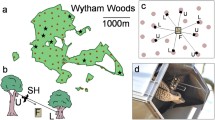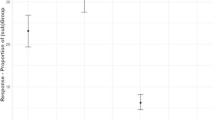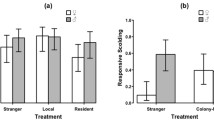Abstract
Collective detection concerns the idea that all members of a socially feeding group are alerted to an attack as long as at least one group member detects it. We found that collective detection in mixed flocks of emberizid sparrows is limited markedly by relatively small degrees of visual and spatial separation between foragers. These limits on collective detection appear to influence the degree to which flock members lower their vigilance with increasing group size (the group size effect). Specifically, the decrease in collective detection with increasing visual and spatial isolation between foragers is accompanied by a concomitant decrease in the strength of the vigilance group size effect. Explanations for the vigilance-related effects of such separation based upon a bird’s ability to monitor the vigilance behavior of flockmates can be ruled out for our experimental system. Our results also shed light on the issue of whether the vigilance group size effect is influenced more by collective detection or the simple dilution of risk with increasing group size. We argue that collective detection is not only an important determinant of the group size effect, but also that the phenomena of collective detection and risk dilution are interdependent.
Similar content being viewed by others
Author information
Authors and Affiliations
Additional information
Received: 25 July 1995/Accepted after revision: 17 December 1995
Rights and permissions
About this article
Cite this article
Lima, S., Zollner, P. Anti-predatory vigilance and the limits to collective detection: visual and spatial separation between foragers. Behav Ecol Sociobiol 38, 355–363 (1996). https://doi.org/10.1007/s002650050252
Issue Date:
DOI: https://doi.org/10.1007/s002650050252




